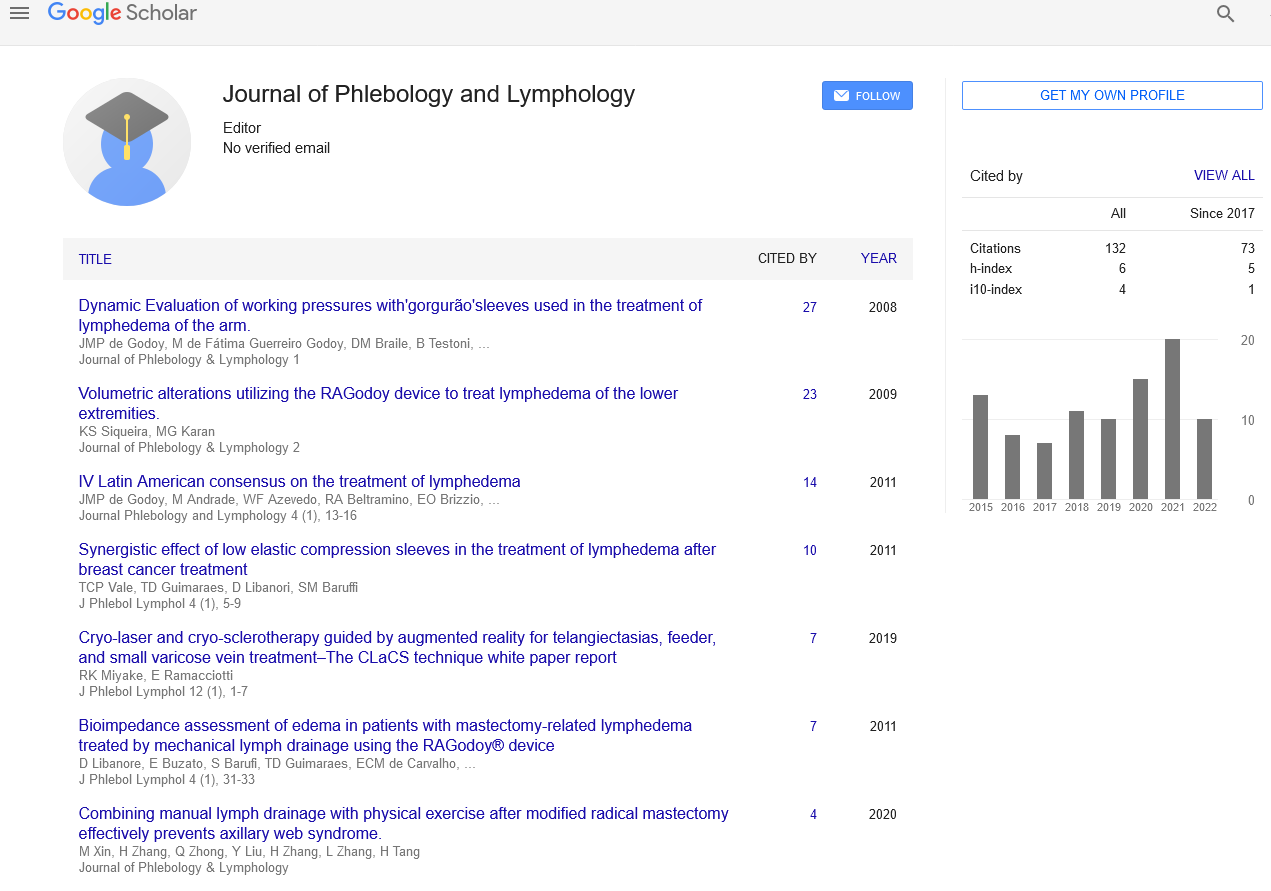
Sign up for email alert when new content gets added: Sign up
Abstract
Ten conclusions after ten year's experience in radical endovenous laser therapy of lower extremity varicose veins
Author(s): Maly I*, Julínek S and Klein DOBJECTIVE: The paper is aimed to show our experience with endovenous surgical treatment of superficial venous insufficiency of the lower limbs.
SUBJECTS AND METHODS: We have been performing the radical endovenous laser therapy in the treatment of the chronic venous insufficiency of the great and the small saphenous veins with the device Cerelas D 15, (Biolitec Inc.) since 2004. The 980 nm wavelength was used until the end 2007, and the 1470 nm wavelength has been used from 2008 to date. All patients underwent the procedure under the conditions of the aseptic operation theatre, the length of their hospitalisation ranged from a few hours to 24 hours. In total, we treated 835 patients, 65.5% of them were females, the great saphenous veins were closed in 724 cases, the small saphenous veins in 103 cases, bilateral procedure was performed in 102 cases and the accesory veins in 77 cases. The power of the laser beam decreased from 12W in the groin to 2W in the ankle. The amount of energy released per unit length oscilated around 80 J/cm. We always sought to treat simultaneously all varices on the extremities du- ring the initial endolaser therapy. All dilated branches of the main veins were closed either by laser, or instrumentally with combined approach, or by sclerotisations.
RESULTS: 448 (53.6%) patients were examined within 1 to 8 years after the procedure. The partial recanalisations in the main veins were observed in 7 (6.5%) patients, with the 980 nm device, and in 29 (8.5%)patients with 1470 nm device, respectively. The complete recanalisation in the main veins was observed in 3 (2.8%) patients with 980 nm device and in 8 (2.3%) patients with 1470 nm device, respectively. All patients with total recanalisation have been reoperated. The recurrence in the groin was found in 3 (2.8%) cases with 980 nm device and in 19 (5.5%) with 1470 nm device, respectively. The recurrence in the popliteal area was found in 1 (0.9%) with 980 nm device and in 5 (1.46%) with 1470 nm device, res- pectively. The immediate complications after the surgery were: longer lasting paresthesia in 12 (2.67%), skin burn of mild degree in 7 (1.56%), deep venous phlebothrombosis in 1 (22%) patient.
CONCLUSION: A vast majority of our patients was satisfied with the endolaser therapy provided for their varices. The benefit of radical treatment may be summarised as followes: better postoperative comfort and immediate cosmetic effect, significantly shorter work incapacity, faster achievement of full socioeconomic activity. The administration of the cold physiological saline solution close to the laser fiber is a great advantage, in present time. We belive, that if we offer the radical treatment of lower extremity varices via endolaser therapy, the procedures should be performed in conditions of the aseptic operation theatre, with the choice of different types of anesthesia, crossectomy, instrumental removal of varices, in special cases. We believe, that the more radical treatment is performed initially, the longer lasting effect may be expected, of course in synergy with the complete care of the insufficient venous system.
Full-Text | PDF




